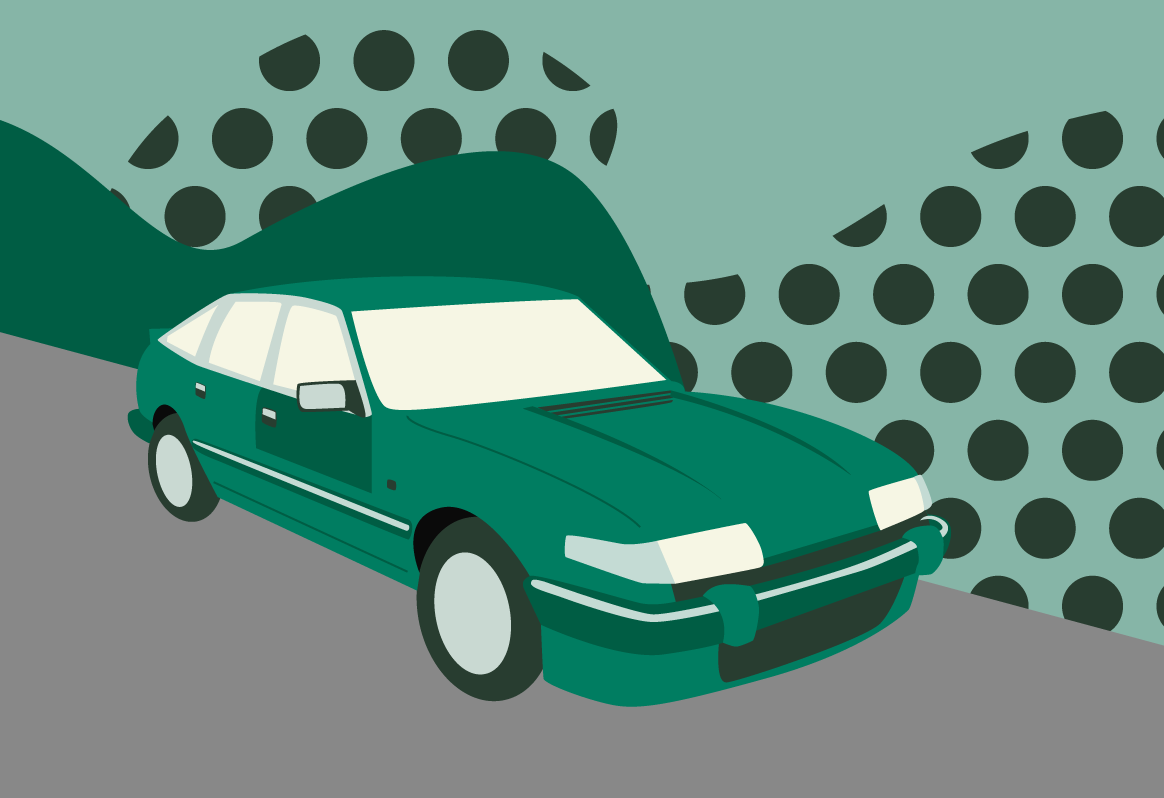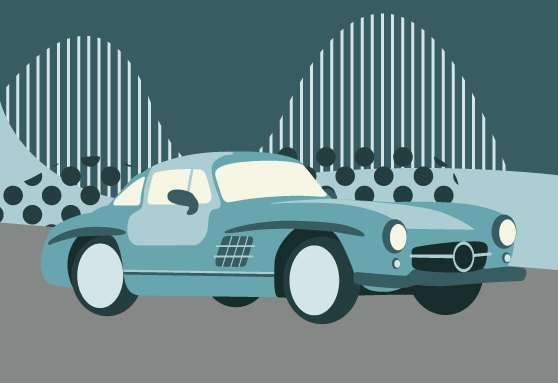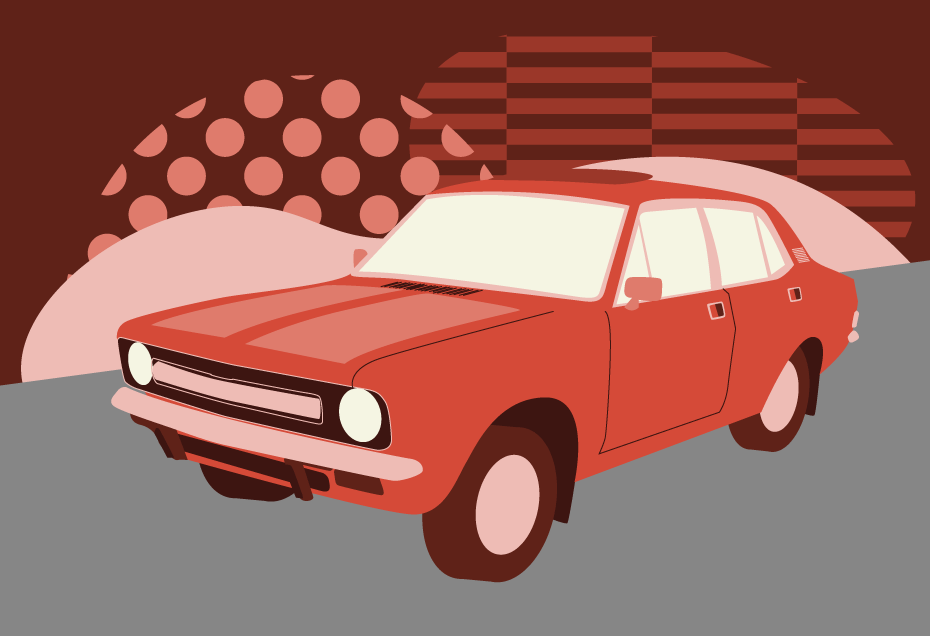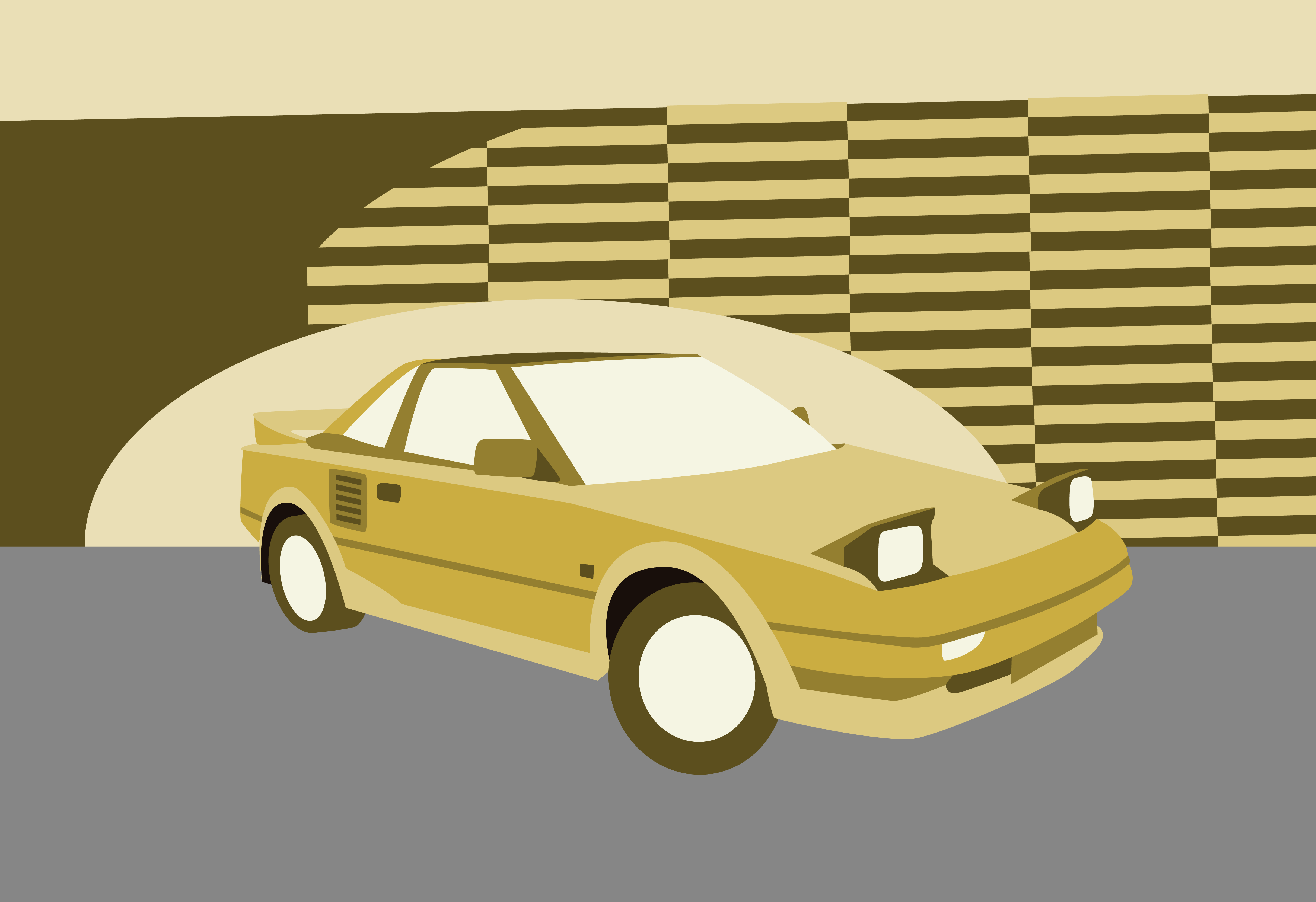The greatest small sports saloon of its time, the BMW 02 series set the Munich company on the road to the all-conquering 3-series.
A shortened, two-door version of the New Class (Neue Klasse) saloons that transformed BMWs fortunes in the early ‘60s, the 02 was revered as a drivers’ car and, in 2002 tii guise, a very fast one.
We look at the history of a car that brought BMW ownership to a new market.
In the late 1950s, BMW was struggling badly, with low-volume sales of its luxury cars and only the Isetta microcar to offer those on a budget.
A takeover by Daimler-Benz was averted by fresh investment from industrialists Herbert Quandt and his half-brother Harald, who increased their stake in the company from 30 to 50 per cent.

Their cash, and the rear-engined, Michelotti-designed 700 effectively saved the company, but it was the subsequent New Class saloons that saw the emergence of BMW’s modern reputation as a maker of quality sports-oriented cars.

And the logical decision to produce a cut down, two-door version of these cruisers produced something special – with better handling, increased performance and a sportier image.
Birth of the 1600-2
Plans for a smaller version of the four-door New Class saloons were hatched as early as 1963, just a year after the bigger cars changed BMW’s reputation forever.
BMW’s design director Wilhelm Hofmeister was the brains behind the project, shortening the wheelbase by two inches to produce a car nine inches shorter overall.

The styling followed the visual cues of its bigger brothers, a glassy, three-box design with an aggressive front end, the bonnet jutting out over the inward slanting grille.
The interior was redesigned to fit the smaller car, while most of the running gear was taken straight from the four-door cars.
Under the bonnet was the single Solex carb, 1573cc M10 unit from the 1600 saloon, producing 85bhp at 5,700rpm and propelling the car to a healthy 102mph.
The new 1600-2 (to denote the two doors) was launched at Geneva Motor Show in 1966, designated as a coupe without remotely looking like one.
It won rave early reviews, earning comparisons with the sporting cars of Alfa Romeo, its cut-down chassis and considerably lighter weight giving BMWs a new-found liveliness.
“A most sporting saloon”
MotorSport magazine tested a 1600-2 in August 1967, describing a well-equipped, well-built car with an “exceptionally smooth” four-cylinder engine.
Its price of £1,298 pitched it against Britain’s home-grown 2-litre cars from Rover and Triumph, but it was better built than either.

“The overall effect of the car…is one of comfort and liveliness,” wrote the magazine. “Whether accelerating hard or cruising at speeds approaching 100mph it is quiet and restful, especially with the windows shut.
“With its powerful and fade-free braking system, and a pleasant and fast 4-speed gear-change, the 1600 feels a most sporting saloon.”
Autocar was similarly impressed, hailing a “really fast car” and eulogising over its free-revving, four-pot engine.
“We have no hesitation in saying that this version of the engine is by far the smoothest in the whole BMW range…remarkably quiet,” it wrote, noting its more precise handling compared to its larger siblings.

“Autocar now knows BMWs pretty well – we have been running the bigger cars for 18 months – and in many ways we like the smaller 1600 best of all.
“It is fast (indecently so for its size), economical and extremely well mannered. In the free markets of Europe it is also good value, but at almost £1,300 tax and duty paid in the UK, the appeal obviously lies with the discerning motorist who can afford and appreciate the fine engineering and gain pleasure from it.”
Better was to come in the autumn with the arrival of the 1600-2ti, in twin-carb form pushing power up to 110bhp – a seriously lively car, but not available in the UK.
CAR magazine pitted the 1600-2 against the Alfa Giulia Super, again noting that “import duty means that (both cars) are regarded in this country as cars for the well-heeled connoisseur, rather than as quality family cars as they are in their respective homelands”.
Is this the post-Brexit reality for Euro-built cars?
The magazine found it hard to split the two, the BMW for the “Teutonically inclined, frustrated rally driver, or the Alfa if you are a Latin-minded racer”.
Like our illustration of the BMW 02 series: sheer driving enjoyment at the beginning of the article?
Download a free high-quality poster version here.
Enter the 2002
Not long after the 1600-2 was launched, two of BMW’s senior men had, unknown to each other, put 2-litre engines into their cars for personal use.
When Helmut Bönsch, director of product planning, and Alex von Falkenhausen, designer of the M10 engine, found out they had both had the conversions done, they put a proposal to BMW for the larger-engine to be fitted as a production model.

At the same time, USA importer Max Hoffman was pressing for a more powerful model after the 1600 had received rave reviews across the Pond.
The 1600ti had failed to meet US emissions targets, but the 100bhp, 2-litre from the 2000 model did comply – and the 2002 was born in 1968.
Bill Boddy, editor of MotorSport, got hold of a test car in September of that year, and loved it…
“It is difficult to know which aspect of this BMW to praise first,” he wrote. “Perhaps it is wiser to look at the BMW as a whole, because it is a combination of good qualities that makes it such an outstanding vehicle.
“So smooth is this overhead-camshaft power unit that only by lifting the rear-hinged bonnet and seeing the firing order set out on the cans cover was I reminded that I had been driving behind a 4-cylinder engine.”
The 2002 could hit 110mph and, at 9.2 seconds, was more than three seconds quicker to 60mph than the 1600.

Boddy described the “sheer driving enjoyment” of the car: “Whether it is being flung through open bends or manoeuvred quickly through traffic, this is a superbly safe and rewarding car to drive.
“Once driven, never forgotten, the BMW 2002 is about the finest family-type car available, unless perhaps you are looking for a little more luxury or rather more of those elusive virtues known collectively as ‘character’.”
Over in America, Car & Driver’s David E. Davis Jr wrote a seminal road test report urging his compatriots to ditch home-built cars or little two-seaters and embrace this new, automotive powerhouse.
“If the 1600 was the best $2500 sedan C/D ever tested, the 2002 is most certainly the best $2850 sedan in the whole cotton-picking world,” he said.
It’s worth reading the whole road test to really appreciate how great Davis thought this car was.

There was also a twin-carb 2002ti version which produced an extra 19bhp, but was never available in right hand drive and, as with the 1600-2, and a cabriolet, converted by Baur, plus a touring hatchback.

But it was the 130bhp fuel-injected 2002tii that took the car to the next level.
The greatest small sports saloon
The 2002tii was launched in 1971, the Kugelfischer indirect injection added to a higher compression ratio providing oodles of extra power and, importantly, torque.
Now, 60mph could be hit in 8.3 seconds, while mid-range acceleration was streets ahead of its rivals. Top speed was up to 116mph.

Testing the car in December 1971, Autocar said the tii was “a fast car by any standards; not so much in maximum speed as in mid-range acceleration.
“It has few peers when it comes to hustling across country on mediocre roads; none at all, perhaps, if one considers the comfort and quietness which go with it.”
Motor Trend described it as BMW’s “little super car”, which could “devastate almost everything else on the road, hauling down into corners at Porsche 911-like velocities, having the same power reserve to throttle steer as well”.

“After three days of generally flogging the tii over the autobahns and rural byways of Bavaria, we were ready to say that it was maybe the most fun BMW or anybody has ever built into a car, certainly the best small sedan we’ve ever tried in its class,” the magazine wrote.
“As far as quality goes, the BMW, all BMWs, are in a class by themselves.”
But even the 2002tii was not the cream of the 02 crop – that honour goes to the 2002 Turbo, Munich’s, and Europe’s, first production turbocharged car.
BMW 2002 Turbo
The 2002tii was already ahead of the pack of sporting rivals like the Triumph Dolomite Sprint, Fiat 124 Coupe, Ford RS2000 and Alfa 2000GTV.
But Munich’s engineers were convinced the 2002’s chassis could handle even more power, and Paul Bracq’s 1972 concept, featuring gull-wing doors and a turbo-charged M10 engine, showed what was possible.

It never went into production, but was enough to push work on the 2002 Turbo forward, with a KKK (Kuhnle, Kopp and Kausch) unit helping to push output up from 130bhp to a stonking 170bhp.
An M-car in all but name, the Turbo was launched at the Frankfurt Motor Show in 1973 – five years before BMW’s motorsport division first put its single-letter name to a road car, the M1.
The new car now moved into a very different echelon of rival – on performance, it was mixing it with the considerably more expensive Porsche 911.
Like our illustration of the BMW 02 series: sheer driving enjoyment at the beginning of the article?
Download a free high-quality poster version here.
You had to climb to the even more expensive 911S before there was an appreciable difference in performance.
Autocar timed the car at 7.3 seconds to 60mph in November 1974, rapid for the time.

“It’s among the elite of high performance vehicles that can reach 120mph in less than half a minute,” it wrote, giving “unreserved praise to the car for its handling”.
“The 2002 Turbo is most civilised and sacrifices nothing in the provision of so much performance at a price unmatched by any rivals.”
The interior was given a more sporty feel, the rather hard standard seats replaced by more comfortable sports seats, a leather, spoked steering wheel, turbo pressure gauge and a red facia insert giving all uplifting the previously staid surroundings.

The design team went to town on the bodywork – flared riveted wheel arches, deep front spoiler, full-length decals and rear spoiler left some saying it was “provoking aggressiveness”. Well, if you’ve got it, flaunt it.
This being 1973, the car suffered from massive turbo lag of up to three seconds, and was prone to swapping ends in inexpert hands not fully prepared for the arrival of the boost.
Road & Track magazine described this “Jekyll-and-Hyde character”, with a “punch to the guts” surge when the turbo kicked in above 4,000rpm.
Thanks partly to the 1973 oil crisis, only 1,672 Turbos were built, all left hand drive, with just 12 remaining registered for road use in the UK today.
The Alpina 02
Back in 1967, while BMW was still toying with the idea of putting a larger engine in the 1600-2, a small firm in the Bavarian town of Kaufbeuren was already imbuing the car with sensational power.
That firm was Alpina, which had started out as a manufacturer of typewriters, but moved into vehicle engineering thanks to the enthusiasm of Burkhard Bovensiepen who convinced his father – who ran the firm – to let him dabble in his hobby of tuning cars.

BMW was so impressed with his efforts at tuning the BMW 1500, the company honoured the full factory warranty to cars with the Alpina system.
By the time the 1600-2 was launched, Bovensiepen was working solely on tuning, and put a 1990cc engine into the smaller car before BMW had a chance to launch the 2002.
This car was short lived, with the 2002 arriving the following year, but the new model gave Bovensiepen the chance to advance his system starting from a higher base.
He offered a range of modified 2002s, from a straight-forward, warmed up Alpina A1, a hotter A2 pumping out 150bhp, and the 158bhp A2S.
Once the fuel-injected 2002tii arrived, Bovensiepen wrung up to 169bhp out of its 1990cc engine in the A4S – almost matching the later factory 2002 Turbo.
The link between Alpina and BMW grew, and continues to this day, with the cars sold and serviced through the BMW dealer network.
Like our illustration of the BMW 02 series: sheer driving enjoyment at the beginning of the article?
Download a free high-quality poster version here.
Special editions
Over the years, a number of special edition 02s were produced, the best-known being the Diana cars and the Elektro, an electric vehicle produced for the Munich Olympics in 1972.
The series of 12 ‘Diana cars’ came about when legendary racing driver Hubert Hahne, who achieved stunning successes for BMW in the ‘60s, presented his actor wife Diana Korner with a special equipment 2002ti as a wedding present.
A BMW agent based in Dusseldorf, Hahne agreed a deal with the manufacturer to produce a series of 12 cars, all painted different colours and with a variety of engines including turbos and six-cylinders.

Badged ‘BMW Diana’ and ‘powered by Hubert Hahne’, the cars featured sliding roofs, racing seats, electric front windows, upgraded headlamps and five-speed gearboxes.
For the Munich Olympics, BMW produced two Inka Orange 1600-2s, powered by a dozen 12v starter batteries installed in the engine bay.

The batteries alone weighed 772lb, and the cars – used in the opening ceremony and as support cars for the marathon and long distance walking events – could travel 37 miles at a constant 31mph.
Making way for the 3-series
In 1975, the 02 series was replaced by the all-new 3-series, although a base model – the 1502 – continued in production until 1977.
According to the Design Museum London, the E21 3-series is described as “one of 50 cars that changed the world”.
We’re not arguing with that, but without the ground-breaking and brilliant 02 series, it would probably never have come about.






